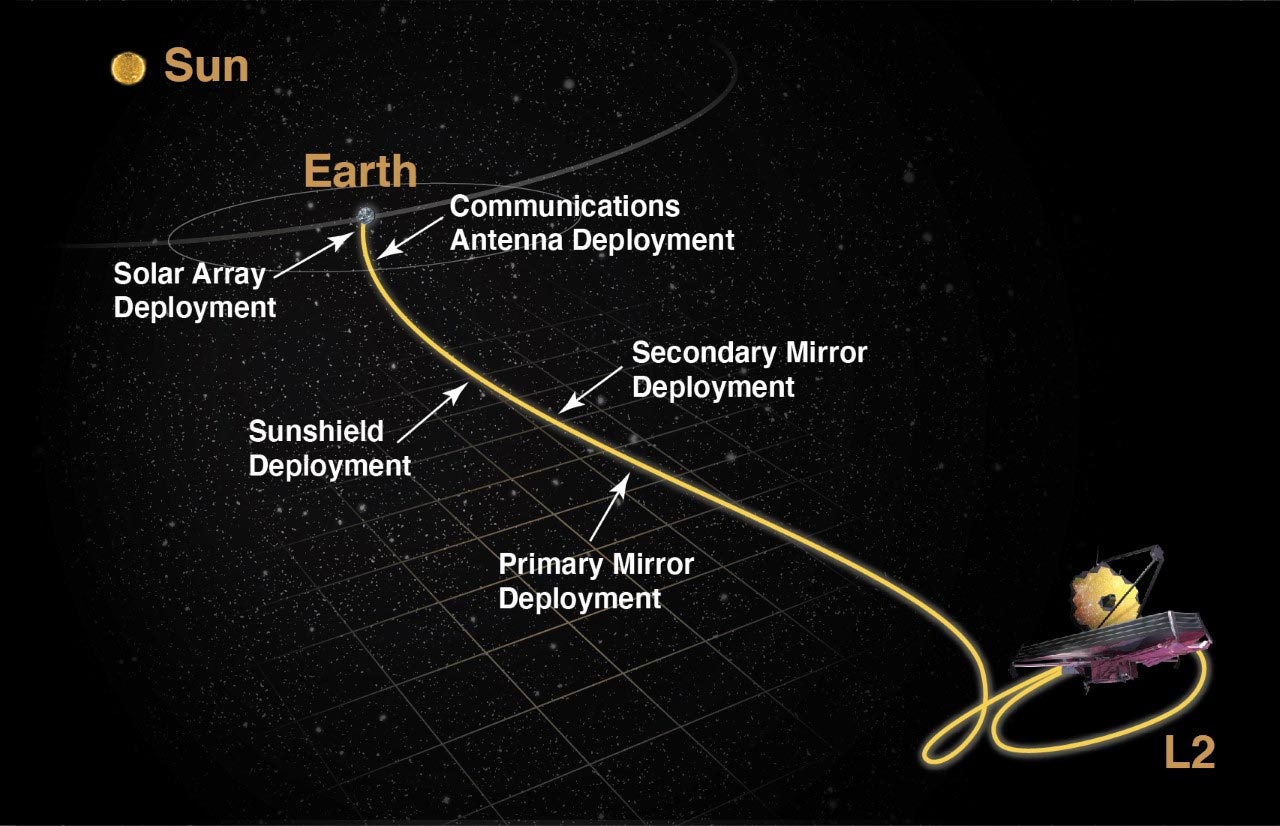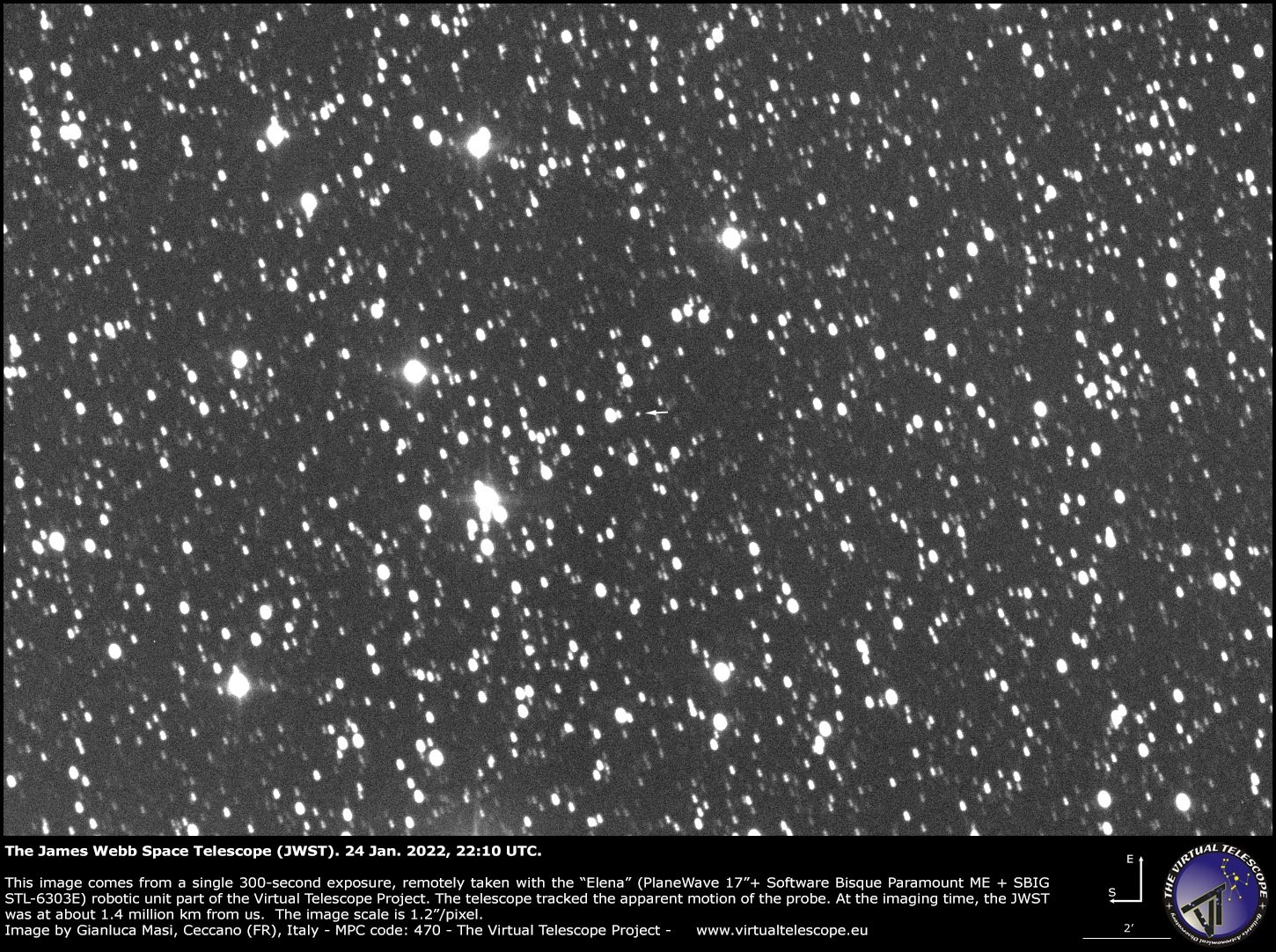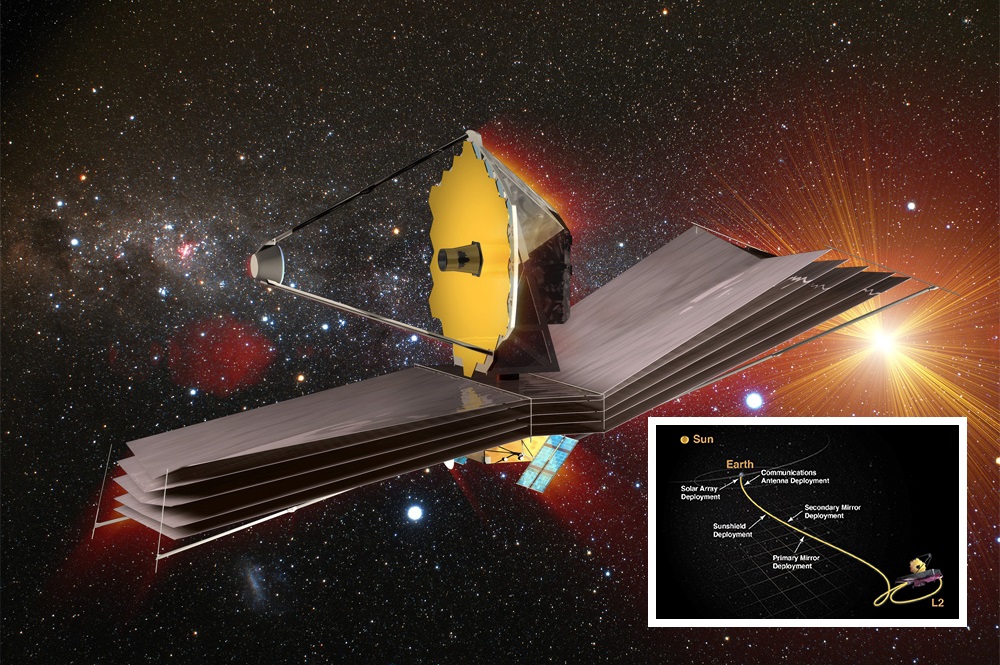The James Webb Space Telescope has had a very interesting month! The telescope spent the weeks after its launch on Christmas Day deploying its mirrors, inspecting individual segments, and then navigating to L2, where it would spend the next 10 to twenty years unraveling the secrets of the universe.
James Webb is set to begin gathering light this summer, according to NASA Administrator Bill Nelson and the JWST’s Chief Science Communications Officer (CSCO).
The Virtual Telescope Project (VTP) recorded photographs of James Webb in orbit to commemorate the event. Except for a brilliant dot in the night sky, there is not much to see there. But, as with Carl Sagan’s iconic “Pale Blue Dot” photograph of Earth (shot by Voyager 1 on its journey out of the Solar System) and Cassini’s “The Day Earth Smiled,” that minuscule point of light has a great deal of importance.

The VTP is an innovative astronomy service developed by the Bellatrix Astronomical Observatory in Ceccano, Italy, and released in 2006. The Planewave 17-inch g/6.8 (432/2939 mm) Corrected Dall-Kirkham Astrograph (called “Elena”) and the Celestron 14′′-f/8.4 (356/3000 mm) Schmidt-Cassegrain OTA are both operated remotely via the VTP.
They also provide public online observation sessions, live broadcasts, professional commentary from their scientific personnel, and international public outreach.
Elena was used to capturing the photograph of the JWST (seen below) on January 24th. This robotic telescope autonomously followed the JWST’s apparent velocity and captured a single 300-second unfiltered exposure that reveals the telescope’s location (indicated by an arrow in the center).
The JWST had reached its ultimate destination (L2) when it was photographed, putting it at a distance of around 1.4 million kilometers (869,920 miles) from Earth.

The VTP has developed a brief GIF animation (below) that displays the JWST’s apparent motion against the stars, in addition to the previous picture.
While these photographs may seem to be nothing more than a small dot against a backdrop of brighter dots (and the blackness of space), they convey the tale of a decades-long expedition.
The telescope’s construction started in 1996, and it was planned that the James Webb would be completed by 2007 with a $500 million budget.
Due to a substantial redesign, concerns with the sun-shield, and the Ariane 5 rocket that would launch it, there were several delays and cost overruns. Delays were also caused by the COVID-19 epidemic, as well as the fact that the James Webb is the most complicated and advanced space telescope ever created.
The telescope’s origami-like form (where it had to fold up to fit inside a payload fairing) necessitated rigorous testing runs time after time, and even minor errors necessitated retesting and safety checks.
Construction was ultimately completed in 2016, however, there was still a lengthy testing regimen to complete. The telescope testing was completed by the end of 2021, and the James Webb was delivered to Kourou, French Guiana, for integration with the Ariane 5 rocket.
The official launch, which took place on Christmas Day, went off without a hitch. “It is genuinely Christmas with all the gifts and everything, plus we have a space mission!” said Thomas Zurbuchen, NASA’s assistant administrator for scientific missions.
Construction was ultimately completed in 2016, however, there was still a lengthy testing regimen to complete. The telescope testing was completed by the end of 2021, and the James Webb was delivered to Kourou, French Guiana, for integration with the Ariane 5 rocket.
The official launch, which took place on Christmas Day, went off without a hitch. “It is definitely Christmas with all the gifts and everything, and we have a space mission,” says Thomas Zurbuchen, NASA’s assistant administrator for scientific missions.
The mission crew is waiting for the telescope to attain operating temperature now that the mission has reached L2. The telescope’s instruments will next be activated, followed by final testing and calibration. If everything goes according to plan, NASA expects the James Webb will gather its first light in June 2022. NASA Administrator Bill Nelson put it this way:
“Webb, welcome home! Congratulations to the team for all of their hard work ensuring Webb’s safe arrival at L2 today. We’re one step closer to uncovering the mysteries of the universe. And I can’t wait to see Webb’s first new views of the universe this summer!”
Source: UniverseToday




